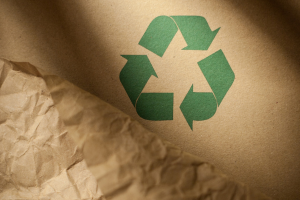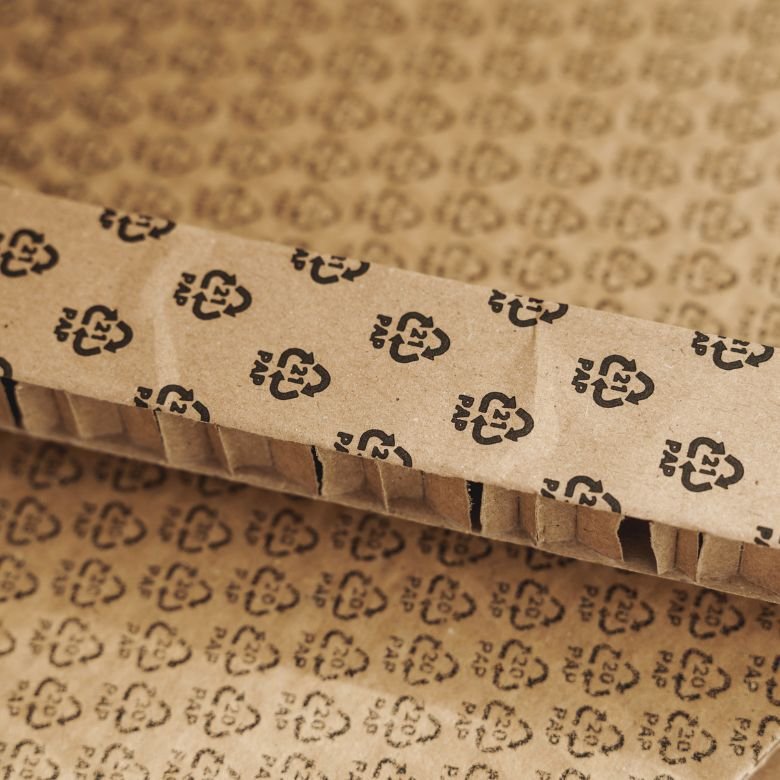The term ‘recycling’ means reusing various types of waste and raw materials. These range from plastics through metals to glass and paper. Recyclable materials are more easily identified by a recycling icon visible on the packaging. What does the pictogram look like and what is the meaning of it? Here are the key facts.

What are recycling icons used for?
According to the law, any manufacturer that generates various types of packaging should place the appropriate recycling symbol on the packaging. These enable consumers to separate waste into the correct bins. The icon on the packaging allows you to quickly identify recyclable raw materials or those suitable for further processing.
Graphic recycling symbols are globally recognised and understandable to everyone. This is because recycling pictograms overcome language barriers as a clear instruction on how to deal with used packaging. In addition to the recyclability icon, the packaging usually contains information on the material of the packaging, which also makes it easier to choose the right waste bin.
Characteristics of the recycling icon
What do recycling icons look like? The most recognisable packaging recyclability seal is in the form of the so-called Möbius loop. It is a green triangle, made up of three thick arrows, arranged clockwise. How to interpret the recycling icon and what do the arrows mean? Each of the arrows has a specific meaning behind and symbolises in turn: the process of collecting, recycling and reusing the raw material.
The packaging industry also uses the triangular pictogram with thin black arrows. It is also a recycling seal, which means that the packaging with this symbol can be recycled. In addition, the packaging may feature information about the type of plastic, usually located under the recyclability icon. You can also find numbers inside the pictogram, which indicate the type of the raw material.
Plastic recycling symbols
The packaging industry uses different types of plastics and plastic recycling symbols (see which plastics are recyclable). The symbols placed on plastics come in the form of the said triangle, which consists of three arrows. Each raw material has a different text and number, for example:
- 2-HDPE means high-density polyethylene;
- 3-PCV means polyvinyl chloride;
- 4-LDPE means low-density polyethylene.
Other recycling symbols on plastic packaging include: 5-PP (polypropylene packaging) and 6-PS (polystyrene packaging). The recyclability seal placed on them indicates that they should go into the yellow waste bin.
PET recycling seals: what are they?
Another group of recyclable material icons are PET (PET/PETE) markings. These can be found on bottles, disposable plates and cups made of poly(ethylene terephthalate). The three arrows on the PET recycling icon indicate that the plastic is recyclable and should go into the yellow waste bin.

Markings on PAP packaging
When you take a close look at the recycling seals on paper packaging, you will notice the ‘PAP’ mark and the numbers: 20, 21 or 22. PAP is short for ‘paper’ and number 20 indicates corrugated cardboard, 21 means non-corrugated cardboard, and paper is described by the icon PAP 22. Where do you put this type of waste? The recycling icon on a paper packaging indicates that it should go into the blue waste bin (unless the packaging is dirty or greasy).
See: how to separate paper waste?
Icons on food packaging and products
Pictograms and recycling signs can also be found on food packaging and products. The typical marking of recyclable goods is the aforementioned Möbius loop. In addition, the eco-label may also be accompanied by wording such as: Recyclable and a logotype ‘Dbaj o czystość’ [International Tidyman] with a figure of a man and a waste bin.
Other eco-labels can also be found on food packaging and products, including:
- ‘reusable’ sign (two arrows arranged horizontally and facing two opposite directions),
- Möbius loop with a value expressed in percentage – placed on recycled packaging.
A separate category of logos are food pictograms indicating the origin, quality or biodegradability of products. Yet, these should not be confused with the recycling seals.
What do the signs on plastic packaging look like? What exactly do they mean, and which ones indicate recyclability? Visit the PCC Group blog and find out!
Read also about upcycling and downcycling.
